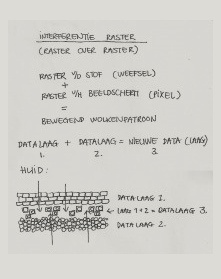MOIRÉ EFFECT
In mathematics, physics, and art, a moiré pattern is a secondary and visually evident superimposed pattern created, for example, when two identical (usually transparent) patterns on a surface (such as closely spaced straight lines drawn radiating from a point or taking the form of a grid) are overlaid while displaced or rotated a small amount from one another.
Etymology: The term originates from moire, a type of textile, traditionally of silk with a rippled or “watered” appearance. “Watered textile” refers to laying part of the textile on top of another part, and pressing the two layers when wet. The similarity of the spacing of individual threads (warp and weft), which is, however, not perfect spacing, creates characteristic patterns when the layers are pressed together; when dry, the patterns remain. Moiré is often referred to by the Japanese word mura, which is roughly translates to “unevenness; irregularity; lack.”
